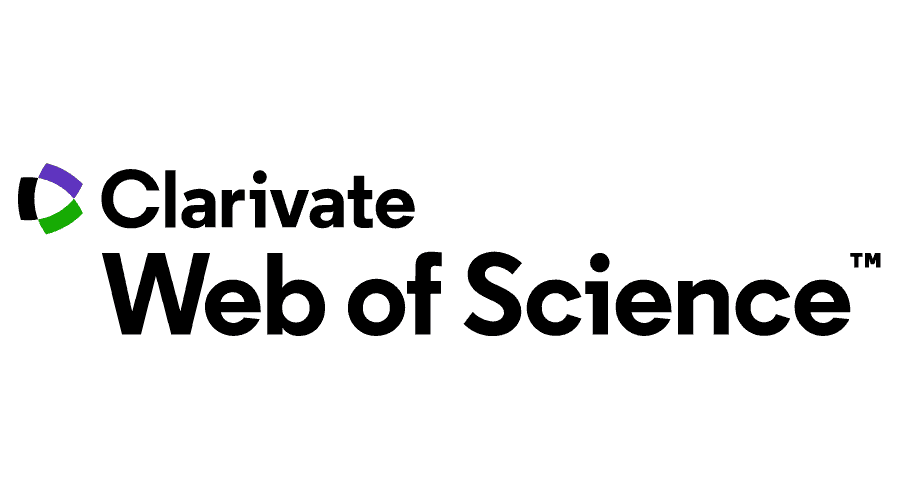Abstract
Research Aims: This research aims to investigate the impact of organizational inertia on digital capabilities and digital transformation to optimize firm competencies.
Design/Methodology/Approach: The dataset was produced through a quantitative survey of 125 firms in Indonesia using the Structural Equation Model (SEM) to analyse the data.
Research Findings: The results of this study indicate that organizational inertia indirectly impacts firm competencies through digital capabilities and digital transformation. Organizational inertia impacts digital capabilities, not digital transformation, whereas digital capabilities impact digital transformation and a firm’s competencies.
Theoretical Contribution/Originality: This study contributes to the literatures on organizational behaviour and strategic management by investigating the impact of organizational inertia on the success of digital transformation and its impact on firm competencies.
Managerial Implication in the South East Asian context: The research findings embrace digital transformation practices by enhancing firms' digital capabilities, particularly in digital transformation response, digital opportunity identification, innovative digital technology product development, acquisition, and mastering state-of-the-art digital technologies.
Research Limitation & Implications: The findings of this study reflect the conditions of numerous enterprises operating in several industry sectors in Indonesia during the chaotic post-COVID-19 pandemic period. Furthermore, the survey respondents constitute various firms with various digital transformation implementation levels.
References
Airikkala, A. (2021). Dynamic capabilities and organizational inertia during digital transformation. Vasaa, Finland: University of Vasaa.
Barney, J. B. (2001). Resource-based theories of competitive advantage: A ten-year retrospective on the resource-based view. Journal of management, 27(6), 643-650.
Bharadwaj, A., El Sawy, O. A., Pavlou, P. A., & Venkatraman, N. V. (2013). Digital business strategy: toward a next generation of insights. MIS quarterly, 471-482.
Björkdahl, J. (2020). Strategies for digitalization in manufacturing firms. California Management Review, 62(4), 17-36.
Blackburn, S., Laberge, L., O’toole, C., & Schneider, J. (2020). How COVID-19 has pushed companies over the technology tipping point—and transformed business forever. New York City, USA: McKinsey Global Publishing.
Carcary, M., Doherty, E., & Conway, G. (2016, September). A dynamic capability approach to digital transformation: a focus on key foundational themes. In The European Conference on Information Systems Management (p. 20). Academic Conferences International Limited.
Chu, Y., Chi, M., Wang, W., & Luo, B. (2019). The impact of information technology capabilities of manufacturing enterprises on innovation performance: Evidences from SEM and fsQCA. Sustainability (Switzerland), 11(21).
Cohen, L., Manion, L. & Morrison, K. (2017). Research Methods in Education. Oxfordshire, England: Routledge.
Drnevich, P. L., & Croson, D. C. (2013). Information Technology and Business-Level Strategy: Toward an Integrated Theoretical Perspective. MIS Quarterly, 37, 483-509.
Forth, P., Reichert, T., de Laubier,, R. & Chakraborty, S. (2020). Flipping the Odds of Digital Transformation Success. Boston Consulting Group. Retrieved from https://www.bcg.com/publications/2020/increasing-odds-of-success-in-digital-transformation.
Guo, L., & Xu, L. (2021). The effects of digital transformation on firm performance: Evidence from China’s manufacturing sector. Sustainability, 13(22), 12844.
Hair, J. F., Risher, J. J., Sarstedt, M., & Ringle, C. M. (2019). When to use and how to report the results of PLS-SEM. European business review, 31(1), 2-24.
Hanelt, A., Bohnsack, R., Marz, D., & Antunes Marante, C. (2021). A Systematic Review of the Literature on Digital Transformation: Insights and Implications for Strategy and Organizational Change. Journal of Management Studies, 58(5), 1159–1197.
Hansen, R., & Sia, S. K. (2015). Hummel's digital transformation toward omnichannel retailing: key lessons learned. MIS Quarterly Executive, 14(2), 51–66.
Haskamp, T., Marx, C., Dremel, C., & Uebernickel, F. (2021, December). Understanding inertia in digital transformation: A literature review and multilevel research framework. In Proceedings on the International Conference on Information Systems (ICIS).
Hess, T., Matt, C., Benlian, A., & Wiesböck, F. (2020). Options for formulating a digital transformation strategy. In Strategic information management (pp. 151-173). Oxfordshire, England: Routledge.
Hong, K., & Kim, B. (2020). Organizational resource and innovativeness to sustainable design outsourcing service. Sustainability, 12(13), 5288.
Izadi, S., & Ahmadian, S. (2018). The effects of strategic orientation and firm competencies on export performance. Revista Publicando, 5(15), 834-857.
Jiménez-Jiménez, D., & Sanz-Valle, R. (2011). Innovation, organizational learning, and performance. Journal of business research, 64(4), 408-417.
Kane, G. (2019). The technology fallacy: people are the real key to digital transformation. Research-Technology Management, 62(6), 44-49.
Khin, S., & Ho, T. C. F. (2018). Digital technology, digital capability and organizational performance: A mediating role of digital innovation. International Journal of Innovation Science, 11(2), 177–195.
Konopik, J., Jahn, C., Schuster, T., Hoßbach, N., & Pflaum, A. (2022). Mastering the Digital Transformation through Organizational Capabilities: A Conceptual Framework. Digital Business, 2(2), 100019.
Larsen, E., & Lomi, A. (2002). Representing change: a system model of organizational inertia and capabilities as dynamic accumulation processes. Simulation modelling practice and theory, 10(5-7), 271-296.
Liang, H., Wang, N., Xue, Y., & Ge, S. (2017). Unraveling the alignment paradox: How does Business-IT Alignment Shape Organizational Agility? Information Systems Research, 28(4), 863–879.
Liao, S., Fei, W., & Liu, C. (2008). Relationships between Knowledge Inertia, Organizational Learning and Organization Innovation. Technovation, 28(4), 183–195.
Liu, D. Y., Chen, S. W., & Chou, T. C. (2011). Resource Fit in Digital Transformation: Lessons Learned from the CBC Bank Global e-Banking Project. Management Decision, 49(10), 1728–1742.
Loureiro, R., Ferreira, J. J., & Simões, J. (2021). Approaches to measuring dynamic capabilities: Theoretical insights and the research agenda. Journal of Engineering and Technology Management, 62, 101657.
Lukito, D., Suharnomo, S., & Perdhana, M. S. (2022). Transformation Management Capabilities for Digital Transformation Initiatives: A Construct Conceptualization in Alignment with the Dynamic Capabilities Framework. Journal of Organizational Management Studies.
Melrose, C., Leeder, N., & Immerman, D. (2021). The state of industrial digital transformation. PTC whitepaper. Retrieved from https://www. ptc. com/en/resources/iiot/white-paper/state-of-industrial-digital-transformation.
Nambisan, S. (2017). Digital entrepreneurship: Toward a digital technology perspective of entrepreneurship. Entrepreneurship theory and practice, 41(6), 1029-1055.
Nambisan, S., Wright, M., & Feldman, M. (2019). The digital transformation of innovation and entrepreneurship: Progress, challenges and key themes. Research Policy, 48(8), 103773.
Ouakouak, M. L., & Ouedraogo, N. (2013). The mediating role of employee strategic alignment in the relationship between rational strategic planning and firm performance: A European study. Canadian Journal of Administrative Sciences/Revue Canadienne des Sciences de l'Administration, 30(3), 143-158.
Perkin, Neil and Abraham, Peter (2017). Building the Agile Business through Digital Transformation. London: Kogan Page Publishers.
Qiu, J., He, S., Tong, H., Guo, L., Gao, X. Y., & Li, D. (2021). Grow in the New: Accenture China Digital Transformation Index. Retrieved from https://www.accenture.com/cn-en/insights/digital/digital-transformation-index.
Rahman, H., & Siswowiyanto, H. P. (2018). Knowledge Inertia in the Innovation of Coffee Production. The South East Asian Journal of Management, 12(2), 3.
Ritter, T. (2006). Communicating firm competencies: Marketing as different levels of translation. Industrial Marketing Management, 35(8), 1032-1036.
Rupeika-Apoga, R., Petrovska, K., & Bule, L. (2022). The effect of digital orientation and digital capability on digital transformation of SMEs during the COVID-19 pandemic. Journal of Theoretical and Applied Electronic Commerce Research, 17(2), 669-685.
Saji, K. B., & Nair, S. U. (2010). Role of management information system in new high-tech product development process: an exploratory study. European Journal of Management, 10(2), 88-92.
Schmid, A. M. (2019). Beyond resistance: Toward a multilevel perspective on socio-technical inertia in digital transformation. ECIS 2019 proceedings.
Schwartz, E. I. (2002). Digital Darwinism: 7 breakthrough business strategies for surviving in the cutthroat Web economy. New York City, USA: Broadway.
Shekhar Mishra, S., & Saji, K. B. (2013). Moderating roles of organizational inertia and project duration in the NPD process: an empirical investigation. Journal of Product & Brand Management, 22(1), 52-64.
Soto Setzke, D. (2020). Reducing socio-technical inertia during digital transformation-the role of dynamic capabilities. In Proceedings of the 28th European Conference on Information Systems.
Svahn, F., Mathiassen, L., & Lindgren, R. (2017). Embracing Digital Innovation in Incumbent Firms. MIS quarterly, 41(1), 239-254.
Töytäri, P., Turunen, T., Klein, M., Eloranta, V., Biehl, S., & Rajala, R. (2017). Overcoming Institutional & Capability Barriers to Smart Services. Retrieved from http://hdl.handle.net/10125/41351
Tripsas, M. (2009). Technology, identity, and inertia through the lens of “The Digital Photography Company”. Organization science, 20(2), 441-460.
Tsiavos, V., & Kitsios, F. (2022, February). Technology as Driver, Enabler and Barrier of Digital Transformation: A Review. In Information Systems: 18th European, Mediterranean, and Middle Eastern Conference, EMCIS 2021, Virtual Event, December 8–9, 2021, Proceedings (pp. 681-693). Cham: Springer International Publishing.
Vial, G. (2019). Comprensión de la transformación digital: una revisión y una agenda de investigación. The Journal of Strategic Information Systems, 28(2), 118-144.
Wang, X., Zhang, Z., & Chun, D. (2022). How does mobile workplace stress affect employee innovative behavior? The role of work–family conflict and employee engagement. Behavioral Sciences, 12(1), 2.
Warner, K. S., & Wäger, M. (2019). Building dynamic capabilities for digital transformation: An ongoing process of strategic renewal. Long range planning, 52(3), 326-349.
Westerman, G., & Bonnet, D. (2015). Revamping your business through digital transformation. MIT Sloan management review, 56(3), 10.
Westerman, G., Bonnet, D., & McAfee, A. (2012). The digital capabilities your company needs. MIT Sloan Management Review, 1-5.
Yeow, A., Soh, C., & Hansen, R. (2018). Aligning with new digital strategy: A dynamic capabilities approach. The Journal of Strategic Information Systems, 27(1), 43-58.
Zhen, Z., Yousaf, Z., Radulescu, M., & Yasir, M. (2021). Nexus of digital organizational culture, capabilities, organizational readiness, and innovation: Investigation of SMEs operating in the digital economy. Sustainability, 13(2), 720.
Recommended Citation
Utomo, Adhi Ari; Maulida, Mira; and Musa, Soebowo
(2023)
"Organizational Inertia, Digital Capabilities, Digital Transformation, and Firm Competencies,"
The South East Asian Journal of Management: Vol. 17:
No.
1, Article 6.
DOI: 10.21002/seam.v17i1.1283
Available at:
https://scholarhub.ui.ac.id/seam/vol17/iss1/6
Included in
Management Information Systems Commons, Management Sciences and Quantitative Methods Commons












